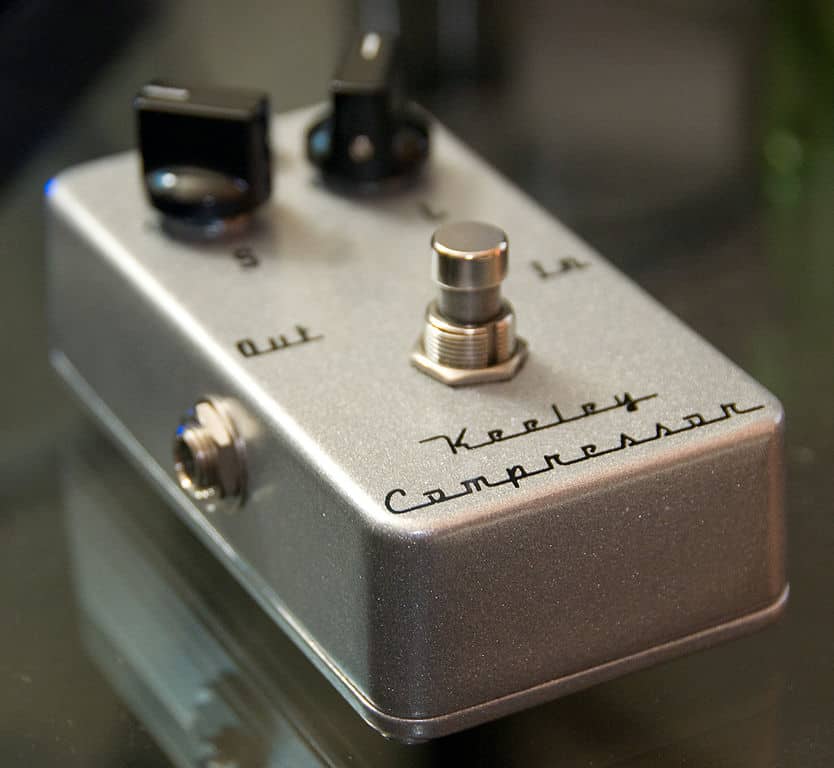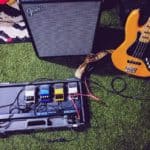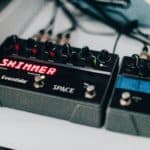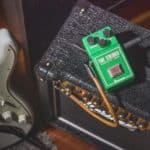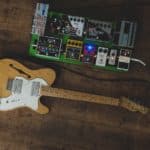I’ll be honest with you.
I’m not that good at tapping.
That’s why any extra help possible means the world to me.
Compression is always a nice place to start when you need to even out your playing.
And although it’s not a silver bullet and you will still need your fingers to do the work, it is really something nice to have working on your side.
Compressor pedals are a great tool to make your tapping and legato lines more consistent. They will normalize the loudness of all the notes you play making them more consonant. However, you will still need to work on your technique to achieve the best tone possible.
In this article, I will tell you all you need to know about compression for modern guitar playing techniques.
After leaving this page, you will have a clearer idea about how using a compressor could benefit the way your tapping licks sound, and what’s the best way to set it up.
Are you ready to get started?
Let’s go!
What does a compressor pedal do?
Compressors are a very common effect in the music world. They are not exclusive to guitar.
Although their functionality is a bit confusing for many, the best way to understand them is by thinking about it visually.
If you see the waveform of a sound in a spectrum analyzer you will see that there are many peaks and valleys. The higher the peak, the louder that part of the signal is.
When you pass that signal through a compressor what it does is cut those high peaks at a certain level.
Now your bumpy signal is a bit more regular, and the difference in volume between the valleys and the peaks is relatively lower.
The important thing to understand is that a compressor doesn’t make your low-volume notes louder, it counterintuitively makes your louder notes quieter.
The thing is that now that the dynamic range (variation between quiet and loud parts) of your sound wave is reduced you can increase its overall volume.
When the volume is increased, of course, the quieter parts will be louder, but the louder parts won’t be as loud as if you hadn’t compressed the sound.
How can a compressor pedal help your tapping on guitar?
You can start imagining now how a compressor could help with your tapping.
By normalizing the louder notes you play with the quieter ones you will get a more consistent volume across your licks.
It’s possible (and very common) that some of the tapped notes or the pulled-off ones lack a bit in energy when compared with the rest of that line, and a compressor will help you average everything out.
But is this just something to turn on and forget about your technique?
Absolutely not.
If you really want a consistent tapping technique you should put down the hours and solve the problem from its source.
It’s not easy, and it requires practice, but once you polish your tapped lines, you will surely get a better sounding result than by overcompressing them.
Where should you put a compressor pedal on your signal chain?
The usual consensus among players is that the compressor should be one of the first pedals on your signal chain.
The idea behind it is to send a more consistent processed signal to the rest of the chain, which then could even modify the dynamic range of the outcome.
Of course, nothing is set in stone, and you should experiment to find out what sounds best to you.
Are there different kinds of compressor pedals?
Yes, there are many different kinds of compressor pedals. However, they all do the same thing.
The difference between them is how their algorithms work, and what they try to replicate (at least the digital ones that are inspired by older analog units).
These different types exceed the scope of this article, and I think you should be extremely worried about it if you are starting to think about compression.
What is the best type of compressor pedal for tapping?
Most compressor guitar pedals are digital.
This means that they replicate how big analog studio compressors would work.
As I said earlier, you shouldn’t be overthinking this at a performance level. In my opinion, the type of compressor you choose is way more important when mixing or mastering a finished song.
There you might prefer the subtleties of one over another.
For guitar performance, I recommend you check out what your favorite players are using.
Some of the most popular models you will see out in the wild are:
- Keeley compressor
- MXR Dynacomp
- Boss CP-1
- Fender The Bends
- Strymon OB-1
What settings should you use on a compressor pedal for tapping and legato?
No default setting will work the same for different guitars and signal chains, so it’s important you dial your own pedal in relation to the rest of your rig.
Your playing style is another great defining factor in determining it.
Compressors usually have the following controls:
- Threshold
- Attack
- Release
- Makeup gain
While the threshold defines how hard the signal will be compressed, both attack and release determine how fast the effect will hit when the threshold is met, and how fast it will decay after hitting.
Makeup gain is there to increase the volume of the signal once compressed, as we discussed earlier.
Here’s a great guide on how to set up your compressor pedal:
Is using a compressor pedal cheating?
By no means is using a compressor cheating.
A lot of players do, and especially those who play insane tapping licks.
If you can’t play, a compressor won’t fix your solos.
Think of it as wearing just a bit of makeup. It surely has very different enhancing effects on Danny Trejo’s face than on Margot Robbie’s

Hello there, my name is Ramiro and I’ve been playing guitar for almost 20 years. I’m obsessed with everything gear-related and I thought it might be worth sharing it. From guitars, pedals, amps, and synths to studio gear and production tips, I hope you find what I post here useful, and I’ll try my best to keep it entertaining also.

